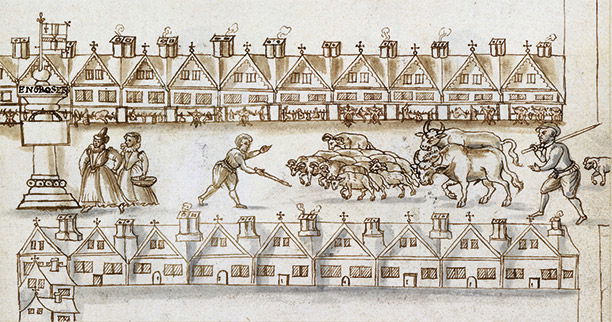Man and Beast: 'Visiting Your Troops of Cattle'
Erica Fudge and Richard Thomas explore relationships between people and domestic animals in early modern England and how new types of archaeological evidence are shedding fresh light on one of the most important aspects of life in this period.
 In early modern England one relationship was vital to the economic and dietary wellbeing of most families: that between people and their animals. Indeed local and national economic stability was reliant on the presence of horses, cows, sheep, pigs and poultry. This dependence can be measured in terms of the need for a large amount of meat in the diet of those who worked the land; the demand for raw materials, such as hides, bones and fats, for crafts and industry; the importance of animal manure to the fertility of the soil; and the necessary power of animals to move goods and support agriculture through the pulling of equipment, such as ploughs and harrows.
In early modern England one relationship was vital to the economic and dietary wellbeing of most families: that between people and their animals. Indeed local and national economic stability was reliant on the presence of horses, cows, sheep, pigs and poultry. This dependence can be measured in terms of the need for a large amount of meat in the diet of those who worked the land; the demand for raw materials, such as hides, bones and fats, for crafts and industry; the importance of animal manure to the fertility of the soil; and the necessary power of animals to move goods and support agriculture through the pulling of equipment, such as ploughs and harrows.





